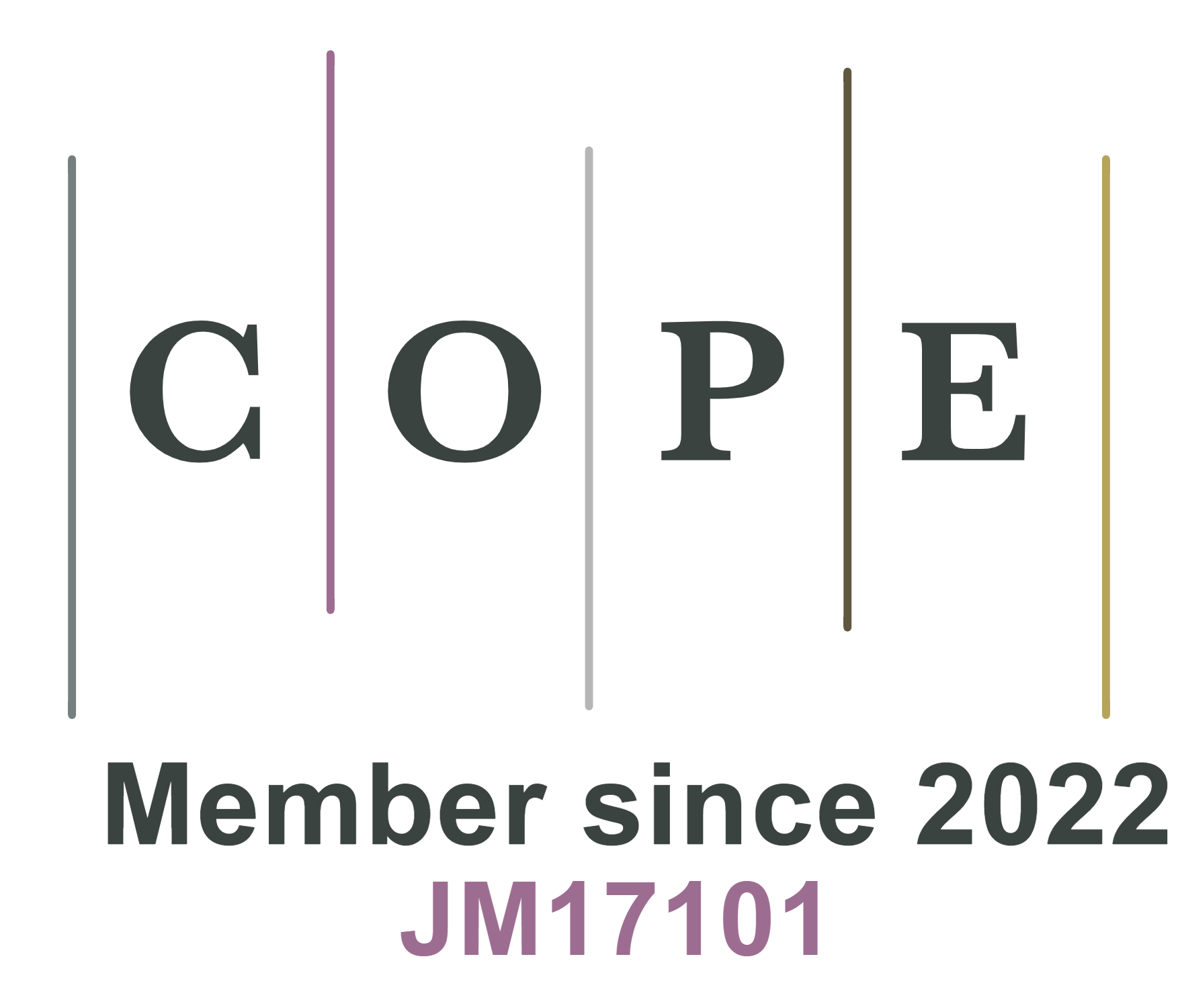A novel SnC/graphene heterostructure as an efficient host material for Li- and Na-ion batteries: computational insight
Abstract
The rapid growth of technologies has influenced our daily lives in building efficient energy storage systems such as lithium-ion batteries (LIBs) for various electric automobiles and portable electronic devices. Graphite, the commercial anode material for LIBs, has several limitations including low lithium storage capacity (372 mAh g-1), low power rate capability, and sluggish charging for applications in grids and heavy electric vehicles. Herein, we propose a novel SnC/graphene heterostructure (SnC/G-H) as a potential anode material for LIBs and sodium-ion batteries, supported by first-principles calculations. The graphene layer in the SnC/G-H model provides high mechanical stability and electrical conductivity, enhancing device application and potentially solving the structural issues of the SnC monolayer. SnC/G-H serves as an excellent Li/Na host material, offering low average voltages (0.34-0.39 V), impressive Li/Na storage capacities of 870 mAh g-1 (exceeding those of pristine SnC and graphite), and minimal activation energy barriers of 0.043/0.079 eV, which promote efficient lithiation/delithiation and sodiation/desodiation processes. These enthralling findings indicate that the SnC/G-H could serve as an efficient host material for rechargeable LIBs and sodium-ion batteries.
Keywords
INTRODUCTION
Lithium (Li)-ion batteries (LIBs) play a crucial role in energy storage systems, finding widespread use in portable electronic devices, such as smartphones, cameras, laptops, and radios, and in automotive machinery[1-5]. For decades, LIBs have been a cornerstone of energy storage technology, and play a central role in addressing some of today’s most pressing industrial and technological challenges. While much research has been focused on graphite as a key anode material, there are still significant concerns that must be addressed, particularly regarding the limitations of graphite and the broader implications for battery performance, cost, and longevity[6,7]. Unfortunately, the low Li storage capacity of graphite (372 mA h g-1) limits its suitability for high-grid applications[8,9]. On the other hand, the scarcity of Li and its high cost pose challenges for the future of Li-based technology. As a result, researchers are exploring other energy storage systems, including sodium (Na)-ion batteries (SIBs), which benefit from abundant Na reservoirs[10-14]. In the case of SIBs, the Na storage capacity in graphite is significantly lower (around 35 mA h g-¹) due to the challenges posed by Na intercalation between graphite layers, given its large ionic radii[15-17]. Novel host materials for rechargeable batteries must be identified to address these limitations.
Addressing anode issues through electrolyte engineering in Li-battery is a dynamic and multifaceted area of research. The focus is on improving electrolyte composition, stabilizing the solid electrolyte interphase (SEI) layer, preventing dendrite formation and enabling new anode materials. Advancements in solid-state electrolytes, high-concentration electrolytes, and new solvents/additives are playing crucial roles in mitigating the challenges associated with anode performance and lifespan[18,19]. However, there are still numerous hurdles to overcome before these technologies can be commercialized on a wide scale, especially in terms of scalability, interface stability, and cost-effectiveness. Tin (Sn) and its derivatives are promising candidates for high-density Li and Na storage. However, they suffer from significant volume variations during intercalation and deintercalation, negatively affecting anode performance by disrupting contact with the current collector and reducing cycle life[20,21]. For instance, researchers have explored 2D graphene
This study marks the first evaluation of the SnC/graphene heterostructure (SnC/G-H) as an anode material for LIBs and SIBs employing computational insights. We address the challenges associated with SnC, such as lack of electrical conductivity and significant area expansion. While pristine graphene possesses high electrical conductivity and mechanical robustness, it is not suitable for Li/Na storage on its own. The constructed SnC/G-H, which combines the beneficial properties of both materials, could be a promising anode material for both LIBs and SIBs, offering potential improvements in battery performance.
COMPUTATIONAL METHODOLOGY
We performed DFT calculations using the Vienna Ab initio Simulation Package (VASP)[37]. To investigate ion-electron interactions, we employed the projected augmented wave (PAW) method with the generalized gradient approximation (GGA) and the Perdew-Burke-Ernzerhof (PBE) functional[38]. The structures were relaxed until the maximum force on each atom was reduced to 1/100 eV/Å, with a total energy convergence of 10-6 eV. Notably, the cutoff energy was chosen to be 500 eV with a k-point mesh of 9 × 9 × 1 for the optimization of the structure [Supplementary Figure 1]. A 20 Å vacuum space was introduced along the
To determine the preferred adsorption sites of Li/Na on 2D SnC/G-H, the adsorption energy was calculated using:
where E(SnC/G)Li/Na denotes the total energy of SnC/G heterostructure with Li/Na adsorption, E(SnC/G) shows the energy of bare SnC/G heterostructure, and ELi/Na describes the energy of a single bulk metallic Li/Na. Consequently, we also envisaged the charge transfer using Bader charge analysis[39]. We determined the activation energy barrier for Li/Na on the surface and interlayer of SnC/G-H using the climbing image nudged elastic band (CI-NEB) method[40]. More than that, the OCV for Li/Na intercalation in the heterostructure can be determined from energy differences, excluding the contributions of volume and entropy effects.
RESULTS AND DISCUSSION
Structural and electronic properties
Similar to hexagonal boron nitride (h-BN), the honeycomb hexagonal structure of SnC is composed of two atoms: carbon and tin. Also, a graphene structure comprises a hexagonal ring of a single carbon layer in a 2D atomic crystal[41]. To maximally avoid lattice match in the SnC/G-H, we employ a 2 × 2 × 1 supercell of SnC monolayer and a 3 × 3 × 1 supercell of G to build the SnC/G-H. To eliminate the coupling effect between adjacent layers caused by periodic boundary conditions, a vacuum of 20 Å is created. The determined lattice parameters are a = b = 7.35 Å, Sn-C bond length of 2.12 Å, and C-C bond length of
Stability and experimental validity
In evaluating the experimental feasibility of the SnC/G-H, we focus on its stability for practical applications. Specifically, we investigate its thermal, mechanical, dynamic, and thermodynamic stability. To assess thermal stability, we performed ab initio molecular dynamics (AIMD) simulations at temperatures of 300 K, 400 K, and 500 K, each for a duration of 5000 fs. The results, as depicted in Figure 2A, show minor fluctuations in total energy over time, confirming the thermal stability of the SnC/G structure. Furthermore, Supplementary Figure 2 indicates no bond breakage in the structures post-AIMD simulation. Also, the temperature variation with AIMD time steps at 300-500 K is shown in Supplementary Figure 3, further substantiating their thermal stability.
Figure 2. (A) AIMD simulation of SnC/G heterojunction at 300-500 K; (B) Variation of strain energy with applied strain along uniaxial (B) x-direction; (C) y-direction, and (D) biaxial strain along the x- and y-directions. AIMD: Ab initio molecular dynamics.
To assess the mechanical stability, we use Voigt notation to evaluate its response to applied strain. This can be estimated as[42]:
where C11, C22, C12, and C66 are 2D elastic tensors; εxx is uniaxial strain along the x-direction, εyy denotes uniaxial strain along the y-direction, and εxydescribes the biaxial strain along the xy-directions. The material must meet the Born-Huang criteria[40-41] to ensure mechanical stability, given as C11 > 0, C22 > 0,
The calculated value of Y for SnC/G heterostructure is 432 N/m. At the same theoretical level, this value exceeds that of graphene (340.5 N/m) and the SnC monolayer (123.02 N/m), indicating that the formation of SnC/G heterostructure efficiently enhances mechanical strength. The Poisson’s ratio of the SnC/G-H is 0.23, which is greater than 0, satisfying the mechanical stability criteria.
Consequently, the dynamic stability is assessed through phonon dispersion curves, specifically the phonon bands of the SnC monolayer with PHONOPY code, as shown in Supplementary Figure 4. The simulation results show no imaginary frequencies, meaning the phonon bands do not fall below zero. This means that the SnC monolayer is dynamically stable. Since graphene can be synthesized experimentally, it is possible to stack graphene with a SnC monolayer, and thus, one can realize the experimental validity of SnC/G heterostructure. Additionally, we calculate the cohesive energy of SnC/G-H to evaluate its thermodynamic stability. The cohesive energy is determined using Ecoh =
Anodic applications of SnC/G heterostructure
Li/Na adsorption
To assess the diffusion and storage characteristics of metal ions within a host material, we examined the preferred adsorption sites for Li/Na on the surface and interlayer of the SnC/G-H. The three considered sites (H, B, and T) are the potential adsorption sites for the adsorption of a single Li/Na atom on the surface and interlayer of SnC/G-H. Consequently, the optimized structures of the Li and Na adsorbed sites are shown in Supplementary Figures 5 and 6, respectively. We determined the adsorption energy (Eads) by employing a 2 × 2 × 1 supercell of SnC/G-H to minimize interactions among adjacent metal atoms and to identify the most advantageous adsorption site. As per equation (1), a more negative Eads signifies an exothermic reaction between SnC/G-H and metal adatoms. The computed adsorption energies of Li/Na at various sites on the surface and interlayer of SnC/G-H are illustrated in Figure 3A. The negative Eads values indicate that nearly all investigated Li/Na content can be efficiently adsorbed onto SnC/G-H. The moderately negative Eads ensures strong adsorption of metal ions on both the surface and interlayer of SnC/G-H. Furthermore, we analyzed the charge transfer of Li/Na on the surface and interlayer, as depicted in Figure 3B. More than that, we calculated the charge density difference using[22]:
Figure 3. (A) Adsorption energy and (B) charge transfer of Li/Na adsorbed on the surface and interlayer of SnC/G; Charge density difference of the most stable site of Li/Na adsorbed on (C) interlayer and (D) surface of SnC/G.
Where
Li/Na diffusion
The diffusion of alkali ions on both the surfaces and within the interlayer of material is pivotal in influencing the kinetics of electrochemical reactions, thereby influencing the charge-discharge characteristics and long-term cycling performance of rechargeable batteries. In this study, we investigate the barrier energy of Li/Na intercalation in the SnC/G heterostructure. To achieve this, we utilize the CI-NEB technique, a well-established method for analyzing the energy barrier associated with Li/Na ion diffusion in the SnC/G heterostructure. Additionally, we explore the discharging/charging process using this method, which offers insights into the minimum energy pathways (MEPs) and transitional states associated with
Figure 4. Diffusion energy barriers of Li/Na on the surface along (A) path-I and (B) path-II. Ebar of Li/Na migration on the interlayer of (C) path-i and (D) path-ii.
Comparative analysis of Sn4C22 with previously explored 2D heterojunction materials for LIBs and SIBs
| Materials | Ebar (eV) | C (mA h g-1) | Voltage (V) | Ref. |
| Li@SiC/G | 0.63 | 1229 | 0.29 | [35] |
| Li@ BlueP/G | 0.13 | 626 | 0.23 | [54] |
| Li@SnC | 0.33 | 410 | 0.44 | [22] |
| Li@WS2/G | 0.27 | 588 | 0.18 | [55] |
| Li@MoO2/G | 0.07 | 1411 | 0.35 | [56] |
| Na@SnSe2 | 0.10 | 387 | 0.68 | [10] |
| Na@SnS2/G | 0.25 | 586 | 1.0 | [57] |
| Na@SnB | 0.22 | 620 | 0.42 | [58] |
| Na@SnC | 0.17 | 205 | 0.24 | [24] |
| Na@Si/G | 0.3 | 487 | 0.84 | [59] |
| Na@VS2/G | 0.08 | 578 | 0.46 | [48] |
| Na@GeS/G | 0.05 | 714 | 0.35 | [60] |
| Li@SnC/G | 0.079 | 870 | 0.39 | This work |
| Na@SnC/G | 0.043 | 870 | 0.34 | This work |
Li/Na storage capacity
Theoretically, Li/Na storage capacity stands as another crucial parameter in assessing battery performance, directly linked to the amount of Li/Na content adsorbed on host materials. Ideally, a promising anode should have extensive storage capacity and low voltage profiles. Thus, we delved into the Li/Na adsorption properties of the SnC/G structure at stable adsorption sites across varying Li/Na concentrations. We explored the high storage capacity by loading the Li/Na content to the maximum amount. The theoretical Li/Na storage capacity (C) was determined using C = (zxmaxF)/MSnC/G, where MSnC/graphene denotes the molecular weight of the SnC/graphene formula unit, xmax represents the maximum concentration of Li/Na adsorbed on SnC/graphene, z is the charge number of Li/Na, and F is Faraday's constant (26.801 A h mol-1). To achieve maximum storage capacity, Li/Na concentrations are layered gradually onto the SnC/G-H. Even at maximum Li/Na concentration, we observed that lithiated/sodiated configurations remain stable with negative Eads. All Li- or Na-adsorbed structures maintain their structural integrity well, signifying high stability. A fully lithiated and sodiated state of the SnC/G-H cell can accommodate a maximum of 6 content (x = 6 for Li/Na), resulting in a corresponding Li/Na storage capacity of the host material reaching
Li/Na potentials
To further investigate the electrochemical performance of the SnC/G heterostructure for anodic applications, we examine the average potentials of Li/Na. The lithiation/sodiation processes of the SnC/G-H as a Li/Na anode are evaluated through the average OCV. For the proper functioning of rechargeable batteries, there should be low voltage at the anode and high voltage at the cathode side. The half-cell reactions for LixSnC/G-H and NaxSnC/G-H are expressed as Sn4C22 + xLi+ + xe-
Where
Cycling stability and comparative study of the host
Subsequently, we further examined the structural stability of the fully intercalated Sn4C22 electrode at room temperature [Figure 6A and B]. The Sn4C22 structure remains intact after the 10,000 fs simulations in all these intercalated systems. The energy fluctuation plots over time demonstrate remarkable thermal stability of the fully lithiated and sodiated SnC/G-H, as evidenced by the linear energy fluctuation trends depicted in Figure 6A and B. It is noteworthy that no significant deformations or bond breakages occur in the SnC/G during Li and Na intercalation; the adsorbed metal ions only deviate slightly from their equilibrium positions. Upon removal of all Li/Na concentrations from the intercalated SnC/G structure, AIMD simulations reveal that this slightly distorted SnC/G structure can swiftly regain its planar configuration, indicating the robust thermal stability of the SnC/G heterostructure during Li/Na-ion intercalation/extraction.
Figure 6. AIMD simulations of (A) Li6SnC/G and (B) Na6SnC/G with their optimized structures; (C) Calculated lattice parameters of
In addition, we investigate the cyclic behavior of an anode, a critical determinant in the electrochemical functionality of rechargeable batteries. Cycling stability hinges on the volume expansion resulting from intercalation/deintercalation during charging and discharging. The volume expansion was calculated by considering the lattice parameters following the full adsorption of Li/Na. In the case of the SnC/G heterostructure, the lattice parameters expanded from 7.35 to 7.605 Å for Li and from 7.35 to 7.629 Å for Na, as depicted in Figure 6C and D. This expansion amounted to 3.46% and 3.80% for fully lithiated and sodiated SnC/G, respectively, resulting in a modest volume expansion that bolsters the cycling stability of the anode. Notably, the lattice variations in Sn4C22 due to Li/Na adsorption and desorption are lesser than those observed in graphite during lithiation and delithiation, typically around 10%[53]. This suggests that the structure of Sn4C22 remains largely unaffected after complete lithiation/sodiation, which holds practical significance. The stability of the host in aqueous environments is essential for their practical application in alkali-ion batteries. To investigate this, we conducted AIMD simulations of the SnC/G heterostructure interacting with H2O molecules at room temperature for 5000 fs. The results, illustrated in Supplementary Figure 9, demonstrate remarkable stability in the solution, emphasizing its potential for use in rechargeable battery applications.
To assess the viability of Li@ Sn4C22 and Na@ Sn4C22 heterostructures as host materials for LIBs and SIBs, we conducted a comparative analysis of diffusion barrier energy, voltages, and Li/Na storage capacity against other commonly utilized heterostructure anode materials, as elaborated in Table 1. Our results reveal that the Sn4C22 heterojunction exhibits a notably higher Li/Na storage capacity than the materials documented in Table 1 and Supplementary Table 1. Moreover, the calculated values of Energy Barrier (Ebar) and average OCVs are juxtaposed, showcasing enhanced mobility and swift charging/discharging rates. It is noteworthy that the Li/Na storage capacity of the Sn4C22 host surpasses that of the conventional anode (graphite) by a factor of two. This examination underscores the emergence of Sn4C22 heterojunction as a promising contender for
CONCLUSIONS
In summary, our systematic investigation using DFT calculations focused on the SnC/G heterojunction as an anode material for LIBs and SIBs. Here are the key findings:
➢Stability and thermodynamics
○The cohesive energy of Sn4C22 is 7.94 eV per atom, indicating that the formation of the Sn4C22 heterojunction is exothermic and thermodynamically stable.
○SnC/G remains stable even at elevated temperatures (300 K, 400 K, and 500 K), demonstrating robust thermal stability.
○Mechanical and dynamic stability are also confirmed, highlighting strong chemical bonds in the SnC/G heterostructure.
➢Li/Na intercalation
○The Sn4C22 heterostructure shows excellent potential for capturing Li/Na ions as an anode material.
○Li/Na intercalated structures remain stable thermally.
○Low Li/Na-ion migration barriers (0.079/0.043) suggest fast charging/discharging processes.
➢Capacity and voltage
○Sn4C22 can store up to six Li/Na content in a single unit cell, providing a high theoretical Li/Na storage capacity of 870 mA h g-1.
○Average voltages of 0.34 V (Li) and 0.39 V (Na) indicate moderate energy profiles.
Overall, the SnC/G heterostructure shows great potential as a durable electrode material for both LIBs and SIBs.
DECLARATIONS
Authors’ contributions
Writing - original draft, investigation, methodology, investigation, formal analysis, data curation, and conceptualization: Rehman, J.
Writing - review and editing, methodology, investigation, formal analysis, data curation: Butt, M. K.
Writing - review and editing, conceptualization, formal analysis: El-marghany, A.
Writing - review and editing, supervision, visualization, formal analysis: Li, Z.
Writing - review and editing, supervision, formal analysis, data curation, conceptualization: Yang, G.
Availability of data and materials
The data supporting this study’s findings are available from the corresponding author upon reasonable request.
Financial support and sponsorship
This work was supported by the National Natural Science Foundation of China (No. 52350410474 and No. 22372142), Yanshan University, China, and the Researchers Supporting Project Number (RSPD2024R667), King Saud University, Riyadh, Saudi Arabia.
Conflicts of interest
All authors declared that there are no conflicts of interest.
Ethical approval and consent to participate
Not applicable.
Consent for publication
Not applicable.
Copyright
© The Author(s) 2025.
Supplementary Materials
REFERENCES
1. Peng, Q.; Rehman, J.; Eid, K.; et al. Vanadium carbide (V4C3) MXene as an efficient anode for Li-ion and Na-ion batteries. Nanomaterials 2022, 12, 2825.
2. Zhang, L.; Li, X.; Yang, M.; Chen, W. High-safety separators for lithium-ion batteries and sodium-ion batteries: advances and perspective. Energy. Storage. Mater. 2021, 41, 522-45.
3. Zhang, X.; Li, Z.; Luo, L.; Fan, Y.; Du, Z. A review on thermal management of lithium-ion batteries for electric vehicles. Energy 2022, 238, 121652.
4. Fan, E.; Li, L.; Wang, Z.; et al. Sustainable recycling technology for Li-ion batteries and beyond: challenges and future prospects. Chem. Rev. 2020, 120, 7020-63.
5. Yu, X.; Chen, X.; Wang, X.; Yuan, Z.; Feng, J.; Rong, J. Metallic B2C monolayer as a promising anode material for Li/Na ion storage. Chem. Eng. J. 2021, 406, 126812.
6. Wu, F.; Maier, J.; Yu, Y. Guidelines and trends for next-generation rechargeable lithium and lithium-ion batteries. Chem. Soc. Rev. 2020, 49, 1569-614.
7. Aurbach, D.; Markovsky, B.; Weissman, I.; Levi, E.; Ein-eli, Y. On the correlation between surface chemistry and performance of graphite negative electrodes for Li ion batteries. Electrochim. Acta. 1999, 45, 67-86.
8. Abraham, K. M. How comparable are sodium-ion batteries to lithium-ion counterparts? ACS. Energy. Lett. 2020, 5, 3544-7.
9. Yoshio, M.; Wang, H.; Fukuda, K. Spherical carbon-coated natural graphite as a lithium-ion battery-anode material. Angew. Chem. Int. Ed. 2003, 42, 4203-6.
10. Rehman, J.; Fan, X.; Butt, M.; Laref, A.; An, D. V.; Zheng, W. First principles predictions of Na and K storage in layered SnSe2. Appl. Surf. Sci. 2021, 566, 150522.
11. Ghani, A.; Ahmed, S.; Murtaza, A.; et al. Bi-C monolayer as a promising 2D anode material for Li, Na, and K-ion batteries†. Phys. Chem. Chem. Phys. 2023, 25, 4980-6.
12. Ren, X.; Zhao, Q.; Mcculloch, W. D.; Wu, Y. MoS2 as a long-life host material for potassium ion intercalation. Nano. Res. 2017, 10, 1313-21.
13. Jiang, H.; Zhao, T.; Ren, Y.; Zhang, R.; Wu, M. Ab initio prediction and characterization of phosphorene-like SiS and SiSe as anode materials for sodium-ion batteries. Sci. Bull. 2017, 62, 572-8.
14. Rehman, J.; Lin, S.; Butt, M. K.; et al. An overview of 2D metal sulfides and carbides as Na host materials for Na-ion batteries. Chem. Eng. J. 2023, 461, 141924.
15. Yang, C.; Sun, X.; Zhang, X.; et al. Is graphite nanomesh a promising anode for the Na/K-Ions batteries? Carbon 2021, 176, 242-52.
16. Wen, Y.; He, K.; Zhu, Y.; et al. Expanded graphite as superior anode for sodium-ion batteries. Nat. Commun. 2014, 5, 4033.
17. Kim, H. J.; Jo, J. H.; Choi, J. U.; et al. Long life anode material for potassium ion batteries with high-rate potassium storage. Energy. Storage. Mater. 2021, 40, 197-208.
18. Cai, T.; Wahyudi, W.; Kumar, P.; et al. Overlooked challenges of interfacial chemistry upon developing high energy density silicon anodes for lithium-ion batteries. Mater. Sci. Eng. R. Rep. 2024, 161, 100854.
19. Peng, Q.; Rehman, J.; Ullah, M.; et al. Anchoring of K and Na on the surface of a novel SiC monolayer: first-principles predictions. J. Energy. Storage. 2024, 104, 114435.
20. Qu, B.; Ma, C.; Ji, G.; et al. Layered SnS2-reduced graphene oxide composite-a high-capacity, high-rate, and long-cycle life sodium-ion battery anode material. Adv. Mater. 2014, 26, 3854-9.
21. Lin, J.; Peng, Z.; Xiang, C.; et al. Graphene nanoribbon and nanostructured SnO2 composite anodes for lithium ion batteries. ACS. Nano. 2013, 7, 6001-6.
22. Rehman, J.; Fan, X.; Zheng, W. 2D SnC sheet with a small strain is a promising Li host material for Li-ion batteries. Mater. Today. Commun. 2021, 26, 101768.
23. Rehman, J.; Fan, X.; Laref, A.; Zheng, W. T. Adsorption and diffusion of potassium on 2D SnC sheets for potential high-performance anodic applications of potassium-ion batteries. ChemElectroChem 2020, 7, 3832-8.
24. Butt M, Muhammad Zeeshan H, An Dinh V, Zhao Y, Wang S, Jin K. Monolayer SnC as anode material for Na ion batteries. Comput. Mater. Sci. 2021, 197, 110617.
25. Mei, J.; Liao, T.; Sun, Z. 2D/2D heterostructures: rational design for advanced batteries and electrocatalysis. Energy. Environ. Mater. 2022, 5, 115-32.
26. Wang, S.; Zhao, S.; Guo, X.; Wang, G. 2D material‐based heterostructures for rechargeable batteries. Adv. Energy. Mater. 2022, 12, 2100864.
27. Wang, J.; Wang, B.; Lu, B. Nature of novel 2D van der Waals heterostructures for superior potassium ion batteries. Adv. Energy. Mater. 2020, 10, 2000884.
28. Khan, A.; Azadmanjiri, J.; Wu, B.; Liping, L.; Sofer, Z.; Min, J. Atomically thin nanosheets confined in 2D heterostructures: metal-ion batteries prospective. Adv. Energy. Mater. 2021, 11, 2100451.
29. Zheng, X.; Liu, J.; Chen, L.; Gao, J.; Tao, Y. Metal sulfides/graphene nanocomposites: an overview of preparation and applications. Recent. Pat. Chem. Eng. 2013, 6, 152-60.
30. Wang, Q.; Rui, K.; Zhang, C.; et al. Interlayer-expanded metal sulfides on graphene triggered by a molecularly self-promoting process for enhanced lithium ion storage. ACS. Appl. Mater. Interfaces. 2017, 9, 40317-23.
31. Vahidmohammadi, A.; Liang, W.; Mojtabavi, M.; Wanunu, M.; Beidaghi, M. 2D titanium and vanadium carbide MXene heterostructures for electrochemical energy storage. Energy. Storage. Mater. 2021, 41, 554-62.
32. Pomerantseva, E.; Gogotsi, Y. Two-dimensional heterostructures for energy storage. Nat. Energy. 2017, 2, 1-6.
33. Liu, H.; Chen, X.; Deng, L.; Su, X.; Guo, K.; Zhu, Z. Preparation of ultrathin 2D MoS2/graphene heterostructure assembled foam-like structure with enhanced electrochemical performance for lithium-ion batteries. Electrochim. Acta. 2016, 206, 184-91.
34. Mikhaleva, N. S.; Visotin, M. A.; Kuzubov, A. A.; Popov, Z. I. VS2/Graphene heterostructures as promising anode material for Li-ion batteries. J. Phys. Chem. C. 2017, 121, 24179-84.
35. He, X.; Tang, A.; Li, Y.; Zhang, Y.; Chen, W.; Huang, S. Theoretical studies of SiC van der Waals heterostructures as anodes of Li-ion batteries. Appl. Surf. Sci. 2021, 563, 150269.
36. Dinda, P. P.; Meena, S. A V3C2MXene/graphene heterostructure as a sustainable electrode material for metal ion batteries. J. Phys. Condens. Matter. 2021, 33, 175001.
37. Hafner, J. Ab-initio simulations of materials using VASP: density-functional theory and beyond. J. Comput. Chem. 2008, 29, 2044-78.
38. Grimme, S. Semiempirical GGA-type density functional constructed with a long-range dispersion correction. J. Comput. Chem. 2006, 27, 1787-99.
39. Sanville, E.; Kenny, S. D.; Smith, R.; Henkelman, G. Improved grid-based algorithm for Bader charge allocation. J. Comput. Chem. 2007, 28, 899-908.
40. Henkelman, G.; Uberuaga, B. P.; Jónsson, H. A climbing image nudged elastic band method for finding saddle points and minimum energy paths. J. Chem. Phys. 2000, 113, 9901-4.
41. Wang, J.; Ma, F.; Sun, M. Graphene, hexagonal boron nitride, and their heterostructures: properties and applications. RSC. Adv. 2017, 7, 16801-22.
42. Usman, M.; Rehman, J. U.; Tahir, M. B.; Hussain, A. First-principles calculations to investigate the effect of Cs-doping in BaTiO3 for water-splitting application. Solid. State. Commun. 2022, 355, 114920.
43. Dappe, Y. J.; Oszwaldowski, R.; Pou, P.; Ortega, J.; Pérez, R.; Flores, F. Local-orbital occupancy formulation of density functional theory: application to Si, C, and graphene. Phys. Rev. B. 2006, 73, 235124.
44. Huang, H.; Wu, H.; Chi, C.; Huang, B.; Zhang, T. Ab initio investigations of orthogonal ScC2 and ScN2 monolayers as promising anode materials for sodium-ion batteries†. J. Mater. Chem. A. 2019, 7, 8897-904.
45. Rehman, J.; Gao, J.; Yu, T.; El-marghany, A.; Yang, G. A novel 2D VC4 as a promising Na-host material for Na-ion batteries: computational insights†. J. Mater. Chem. A. 2024, 12, 6703-11.
46. Yan, X.; Wang, S.; Ding, S.; Rehman, J.; Liu, Y.; Yang, G. A C8P monolayer with cross-sp-hybridized phosphorus atoms and ultrahigh energy density as a K-ion battery anode. J. Mater. Chem. A. 2024, 12, 30842-9.
47. Yu, T.; Zhao, Z.; Liu, L.; Zhang, S.; Xu, H.; Yang, G. TiC3 monolayer with high specific capacity for sodium-ion batteries. J. Am. Chem. Soc. 2018, 140, 5962-8.
48. Tang, C.; Zhang, M.; Zhang, K.; Gong, J. Promising anode material BN/VS2 heterostructure for the Li-ion battery: the first-principles study. Appl. Surf. Sci. 2021, 564, 150468.
49. Liu, B.; Gao, T.; Liao, P.; et al. Metallic VS2/graphene heterostructure as an ultra-high rate and high-specific capacity anode material for Li/Na-ion batteries. Phys. Chem. Chem. Phys. 2021, 23, 18784-93.
50. Ye, X. J.; Zhao, R.; Xiong, X.; Wang, X. H.; Liu, C. S. A first-principles study of the BC3N2 monolayer and a BC3N2/graphene heterostructure as promising anode materials for sodium-ion batteries†. Phys. Chem. Chem. Phys. 2024, 26, 11738-45.
51. Zheng, H.; Jiang, K.; Abe, T.; Ogumi, Z. Electrochemical intercalation of lithium into a natural graphite anode in quaternary ammonium-based ionic liquid electrolytes. Carbon 2006, 44, 203-10.
52. Yang, Z.; Choi, D.; Kerisit, S.; et al. Nanostructures and lithium electrochemical reactivity of lithium titanites and titanium oxides: a review. J. Power. Sources. 2009, 192, 588-98.
53. Vetter, J.; Novák, P.; Wagner, M.; et al. Ageing mechanisms in lithium-ion batteries. J. Power. Sources. 2005, 147, 269-81.
54. Li, Y.; Wu, W.; Ma, F. Blue phosphorene/graphene heterostructure as a promising anode for lithium-ion batteries: a first-principles study with vibrational analysis techniques. J. Mater. Chem. A. 2019, 7, 611-20.
55. Bijoy, T. K.; Sudhakaran, S.; Lee, S. C. WS2-graphene van der Waals heterostructure as promising anode material for lithium-ion batteries: a first-principles approach. ACS. Omega. 2024, 9, 6482-91.
56. Ma, J.; Fu, J.; Niu, M.; Quhe, R. MoO2 and graphene heterostructure as promising flexible anodes for lithium-ion batteries. Carbon 2019, 147, 357-63.
57. Samad, A.; Noor-a-alam, M.; Shin, Y. First principles study of a SnS2/graphene heterostructure: a promising anode material for rechargeable Na ion batteries. J. Mater. Chem. A. 2016, 4, 14316-23.
58. Kuai, Y.; Chen, C.; Abduryim, E.; et al. A two-dimensional metallic SnB monolayer as an anode material for non-lithium-ion batteries. Phys. Chem. Chem. Phys. 2022, 24, 23737-48.
59. Shi, L.; Zhao, T. S.; Xu, A.; Xu, J. B. Ab initio prediction of a silicene and graphene heterostructure as an anode material for Li- and Na-ion batteries. J. Mater. Chem. A. 2016, 4, 16377-82.
Cite This Article
How to Cite
Download Citation
Export Citation File:
Type of Import
Tips on Downloading Citation
Citation Manager File Format
Type of Import
Direct Import: When the Direct Import option is selected (the default state), a dialogue box will give you the option to Save or Open the downloaded citation data. Choosing Open will either launch your citation manager or give you a choice of applications with which to use the metadata. The Save option saves the file locally for later use.
Indirect Import: When the Indirect Import option is selected, the metadata is displayed and may be copied and pasted as needed.
About This Article
Copyright
Data & Comments
Data
























Comments
Comments must be written in English. Spam, offensive content, impersonation, and private information will not be permitted. If any comment is reported and identified as inappropriate content by OAE staff, the comment will be removed without notice. If you have any queries or need any help, please contact us at [email protected].